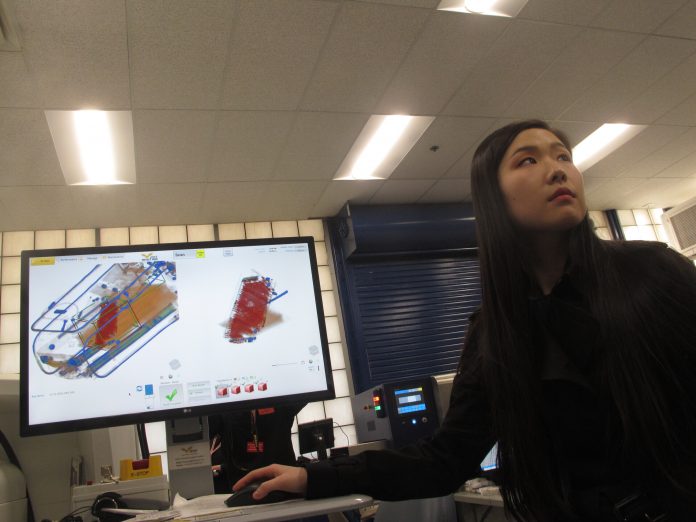
The federal government is enlisting the help of the private sector to develop better ways to spot and intercept illicit opioids shipped into the United States through the mail.
Several federal agencies on Thursday awarded a $500,000 prize to a Massachusetts firm that developed an improved way to scan and analyze the contents of mail for illegal shipments of drugs such as fentanyl, much of which is shipped from China.
The Department of Homeland Security, U.S. Customs and Border Protection, the Postal Service and the White House Office of National Drug Control Policy chose the winners of the Opioid Detection Challenge, a global competition that drew more than 80 entrants since its February announcement.
The goal: Develop new or better ways to find and seize illicit drug shipments at mail processing facilities without unduly slowing down global commerce. Authorities said the U.S. handles more than 480 million international parcels a year through its mail intake facilities.
“The ability to detect these dangerous drugs truly is a national security threat,” James Carroll, the White House’s drug czar, said during a press conference at a federal aviation laboratory just outside Atlantic City. “The only thing that matters is saving lives. We’re excited about this technology.”
Integrated Defense & Security Solutions, a Boxborough, Massachusetts, company, took top honors for its technology using 3D X-ray scanning — similar to CT scans. The company added automated detection computer algorithms to existing scanning technology to better enable the detection of illegal opioids. The system identifies abnormalities in the X-ray images based on the scanned item’s features and physical properties.
At the press conference, company vice president Omar AlKofahi ran a sample package of diluted fentanyl powder through a scanner, where an image on a computer screen flagged it as suspicious. In practice, the system could be used to automatically divert such suspicious packages to the side for closer inspection and possible seizure.
A runner-up winner developed technology that uses radio-frequency signals to search for specific materials, and triggers an alarm when a signal associated with an illicit substance is detected.
Other entries used artificial intelligence and machine learning, spectrometry — the study of interaction between light and matter — and spectroscopy — the study of matter interacting with electromagnetic radiation; robotic noses and other sensor technologies.
The federal government has not committed itself to using the technologies at its mail facilities. Rather, it plans to test the most promising of them in pilot programs to see how well they work in the real world, and how adaptable they might be to changing conditions.
But authorities said the contest, and the $1.5 million in total prize money it offered, shows the government is serious about finding new and better ways to scan the mail for opioids.
“We will see how it performs and go from there,” said Robert Perez, deputy commissioner of Customs & Border Protection.
The technology cited at Thursday’s event “looks very promising,” Chief Postal Inspector Gary Barksdale said.q



















